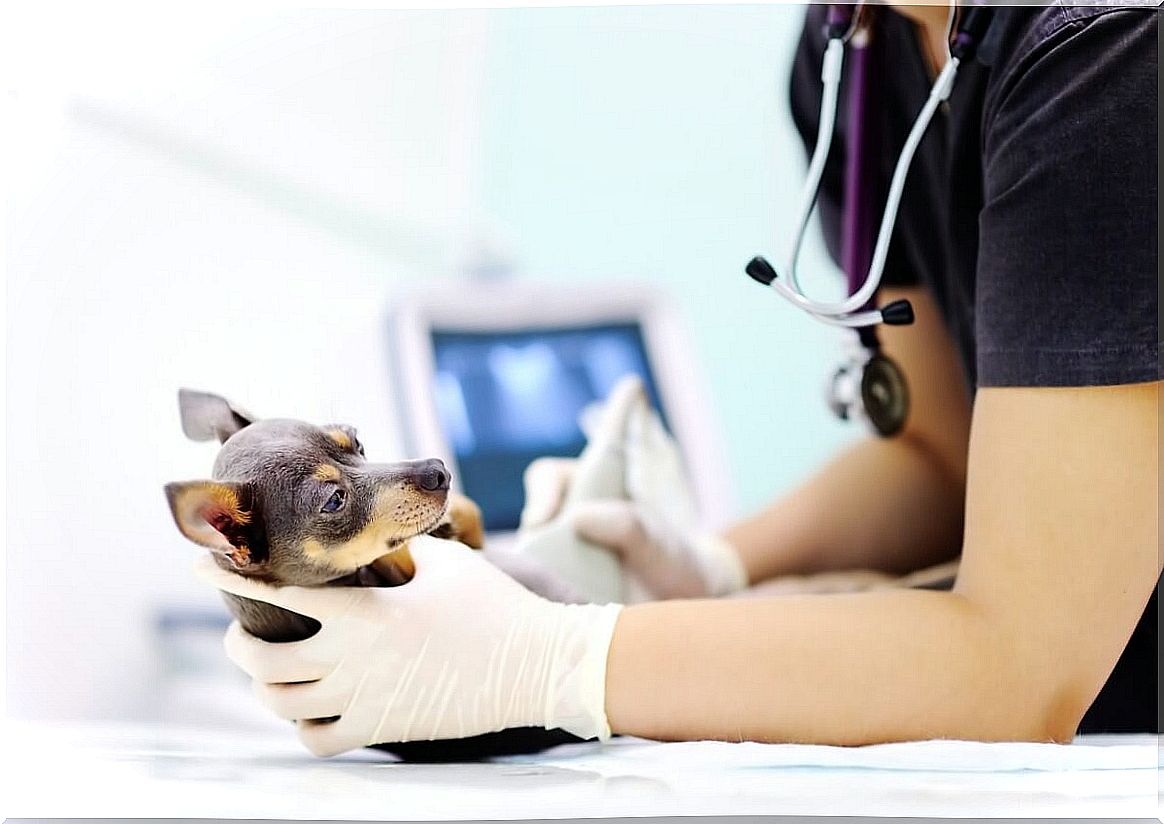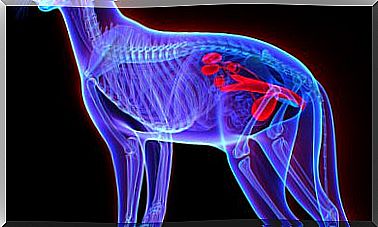Celiac Dogs: Symptoms, Diagnosis And Treatment

Like humans, dogs are also prone to developing numerous diseases. Some of them are so strange at the symptomatic level that diagnosing them becomes quite a journey, between examinations and studies that patients have to undergo. Celiac dogs are part of this group.
Have you heard of this disorder in canids? Without a doubt, it will be very interesting for you to know about this situation, because one of your pets may be suffering without you even realizing it. Do not stop reading this article and discover more about celiac dogs.
What is celiac disease?
Also known as gluten intolerance, celiac disease is an autoimmune disease with a genetic factor. In it, not only the digestive system is affected – where it causes a chronic inflammation of the small intestine – but also many others, which results in a general physical weakening of the dog.
Almost all dogs have a good tolerance to food equally. However, in the case of celiac dogs, they lack the ability to assimilate some ingredients, such as wheat cereals, oats, barley, rye and flour. Among the components of all of them is gluten.
How does gluten affect celiac dogs?
There are some breeds – such as the Samoyed and the Irish Setter – in which a greater predisposition to developing this disease has been observed, due to its high probability of being transmitted between generations. Even so, all celiac dogs generally present the same symptoms.
The immune system of celiac dogs, when in the presence of gluten, produces specific antibodies against it. In the long run, gluten damages the villi of the small intestine and hinders the process of absorbing nutrients, vitamins, minerals and proteins that are vital for the proper functioning of the body.

Main signs of celiac disease in dogs
As it is a multisystemic disease, the signs that you can observe in your pet are very diverse. However, almost all of these patients present some of the symptoms that we tell you about below.
Vomiting and diarrhea
As we mentioned earlier, the first system to be affected is the digestive system. By not having the pancreatic enzymes responsible for catalyzing gluten, the body of celiac dogs tries to expel food by any means, either in the form of vomiting or diarrhea.
Leaky gut syndrome
At the moment in which the intestinal villi are affected by the presence of gluten and stop absorbing nutrients, the cells of the dog’s intestine release a hormone that opens its natural barriers. This allows bacteria, chemicals, and harmful substances to pass into the bloodstream.
Once inside, the immune system recognizes them as foreign and, in its attempt to eliminate them, it can cause the generation of gases, inflammation processes, fever and diarrhea. All this causes great discomfort in the dog at the abdominal level.
Bone and joint problems
When the small intestine in celiac dogs is damaged, the liver does not receive enough nutrients to function properly. For this reason, it reduces, among many other compounds, the production of vitamin C, which leads to pain in the joints and bones.
Epilepsy
As you may have noticed, most of the signs that a celiac dog presents are related to low absorption of nutrients. A decrease in the assimilation of magnesium and vitamin B can lead to seizures and other forms of epilepsy.
Shortness of breath
Gluten-intolerant dogs can present irritation in the throat and nasal passages, something that translates into inflammation, pain and sneezing, which makes proper oxygenation difficult.
Dry skin, general irritation, weight loss, and bad-looking hair are other signs you might see in a celiac dog. The veterinarian will be in charge of determining if the reason why your pet has any of these signs is caused by his body’s response to a rejection of gluten.
How is a celiac dog diagnosed?
If the dog shows any of the signs that we have described, it is advisable to visit the veterinarian. There are numerous supporting clinical studies that are used as tools to reach the definitive diagnosis.
Before this intolerance is confirmed, your dog may be tested for blood, feces, and urine. The purpose here will be to rule out any other pathology that presents a similar signology.
If a final diagnosis cannot be received later, an indication will be given to remove all foods and products that contain gluten from your pet’s diet. After at least a month it is expected to observe the decrease of the signs. This is the safest way to diagnose a celiac dog.
The best treatment for celiac dogs
Gluten intolerance is not like most diseases, where the use of drugs is indicated for its treatment. Although there are exceptions, the ideal treatment will be a change in diet, in which gluten is completely excluded.
With celiac dogs , strict measures must be taken to avoid relapses. Be careful with the treats and treats for dogs that you could offer your pet and make sure that gluten is not present within its ingredients.
Currently, there is a wide variety of balanced commercial feed that are specially made to take care of the health of your pets. You will surely have no complications in finding the ideal one for the canine patient with intolerance.

Gluten intolerance can be very quiet. From the first moment you notice any change in your pet’s behavior, no matter how minimal, pay close attention and observe it: a timely diagnosis will be ideal to avoid future complications.









